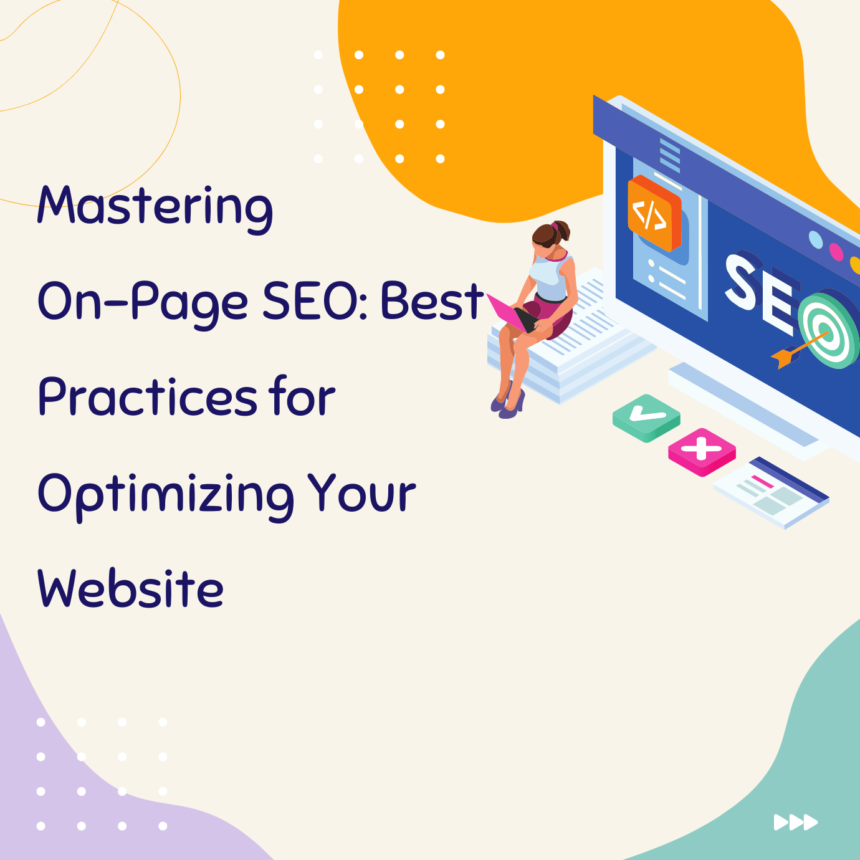On-page SEO plays a critical role in improving your website’s visibility in search engine results and attracting organic traffic. By optimizing various on-page elements, you can enhance your website’s relevance, user experience, and search engine rankings. Here are the best practices for mastering on-page SEO:
1. Conduct Keyword Research: Start by conducting thorough keyword research to identify relevant keywords and phrases that align with your content and target audience. Use keyword research tools to assess search volume, competition, and user intent. Focus on long-tail keywords that are specific and have lower competition.
2. Optimize Page Titles: Craft compelling and keyword-rich page titles that accurately reflect the content of each page. Keep titles concise, preferably under 60 characters, to ensure they are displayed fully in search results. Place the primary keyword towards the beginning of the title for maximum impact.
3. Write Engaging Meta Descriptions: Meta descriptions provide brief summaries of web page content in search results. Write compelling meta descriptions that include relevant keywords and entice users to click through to your website. Aim for concise, informative, and enticing descriptions within 150-160 characters.
4. Utilize Heading Tags: Use heading tags (H1, H2, H3, etc.) to structure your content and highlight key sections. The H1 tag should be reserved for the main title of the page, while H2 and subsequent tags can be used for subheadings. Incorporate relevant keywords naturally into these heading tags.
5. Optimize URL Structures: Create clean, descriptive, and SEO-friendly URLs for your web pages. Include relevant keywords in the URL to provide both users and search engines with an idea of the page’s content. Avoid long and complex URLs with unnecessary parameters or numbers.
6. Optimize Content: Develop high-quality, informative, and engaging content that addresses user needs and aligns with search intent. Use your target keywords naturally throughout the content, including in the opening paragraph, subheadings, and body text. Ensure the content is well-structured with appropriate formatting, bullet points, and relevant images.
7. Image Optimization: Optimize images on your web pages for better search engine visibility. Compress images to reduce file sizes without compromising quality, use descriptive filenames, and add alt text that accurately describes the image using relevant keywords.
8. Improve Page Loading Speed: Page loading speed is crucial for both user experience and search engine rankings. Optimize your website’s performance by minimizing file sizes, enabling browser caching, and leveraging content delivery networks (CDNs). Regularly monitor and optimize page loading speed using tools like Google PageSpeed Insights.
9. Mobile-Friendly Design: Ensure your website is mobile-friendly and responsive across different devices. With mobile usage on the rise, search engines prioritize mobile-friendly websites in their rankings. Optimize your design, fonts, images, and navigation to provide a seamless user experience on mobile devices.
10. Internal Linking: Implement a well-structured internal linking strategy to enhance website navigation and distribute link equity throughout your site. Link relevant pages using descriptive anchor text to guide users and search engines to relevant content. This improves user engagement, helps search engines understand your site’s hierarchy, and boosts SEO.
11. User Experience (UX): Prioritize user experience to encourage longer website visits and lower bounce rates. Optimize your website’s design, navigation, and usability. Make it easy for users to find information, interact with your site, and complete desired actions.
12. Monitor Performance and Analytics: Regularly monitor your website’s performance using analytics tools like Google Analytics. Analyze data such as page views, bounce rates, and conversion rates to identify areas for improvement. Continuously assess and
adjust your on-page SEO strategies based on the insights gained from the data.
By mastering on-page SEO best practices, you can improve your website’s visibility, attract targeted organic traffic, and enhance the overall user experience. Remember to regularly review and update your on-page optimization efforts to stay in line with search engine algorithms and user expectations.
